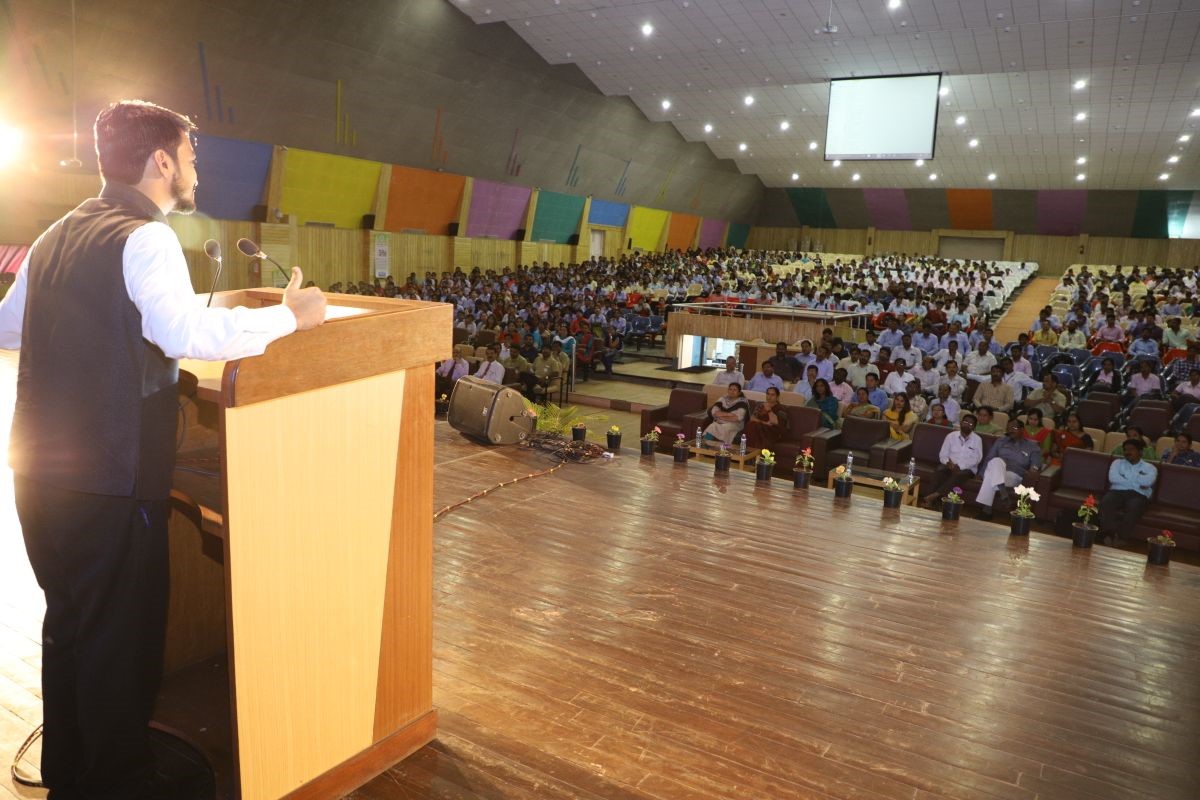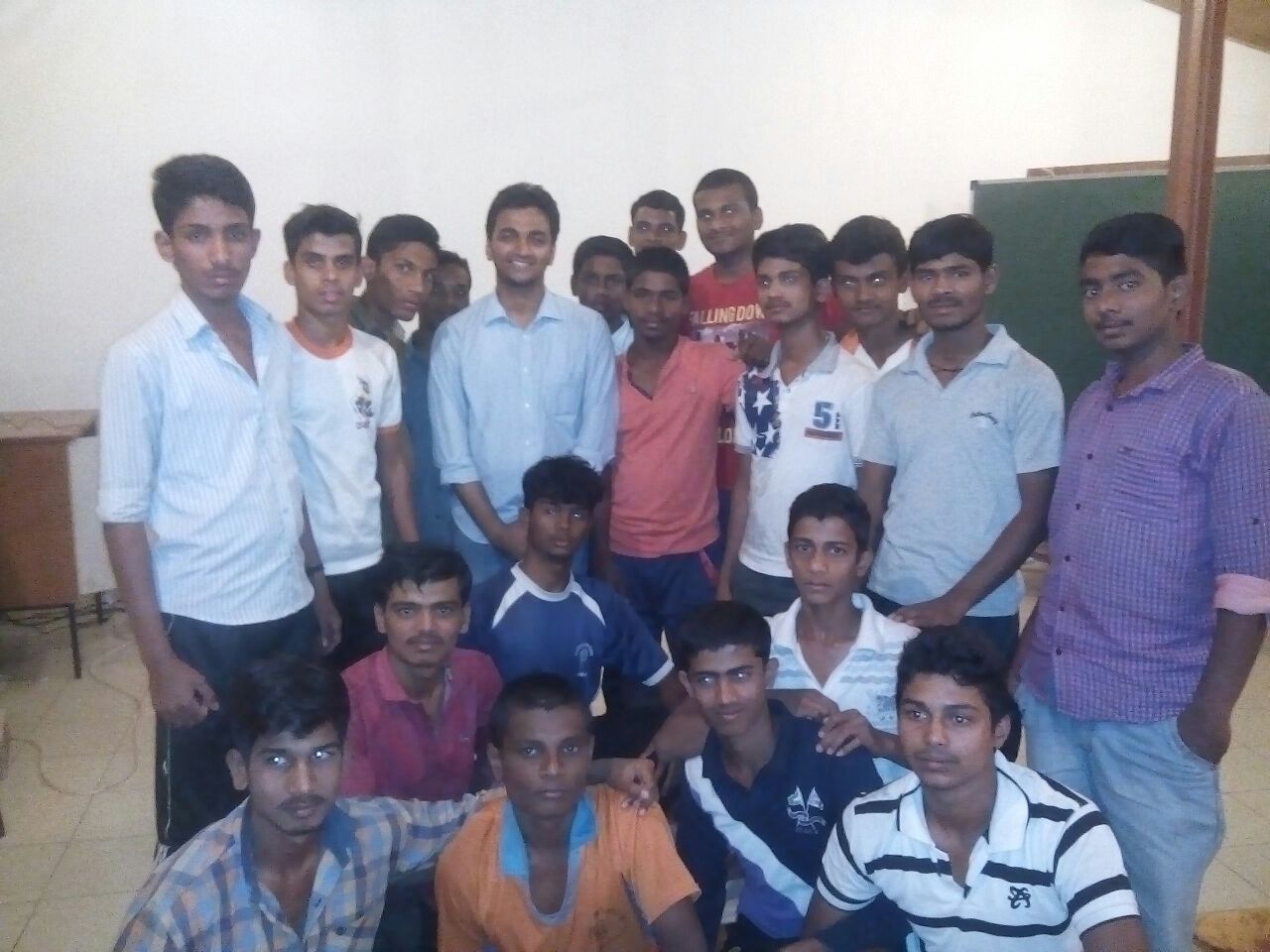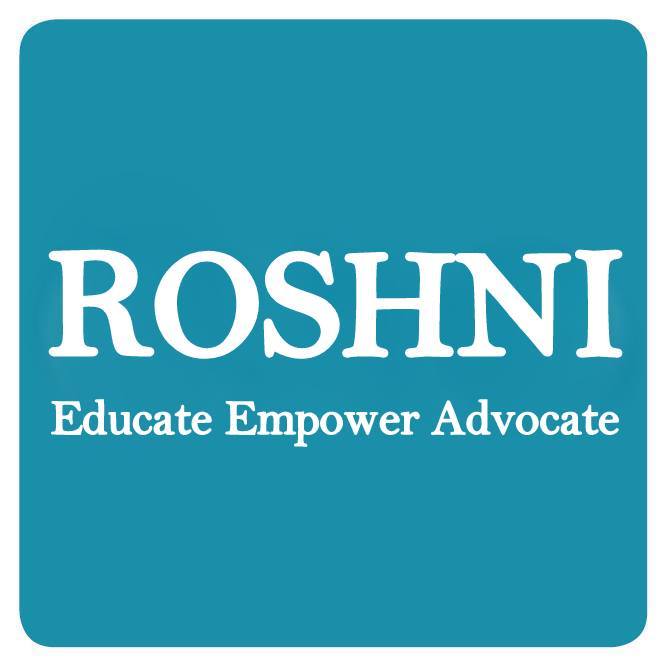- Home
- About us
- Focus Areas
- Menstrual Hygiene and WASH
- Gender, Sexuality, Law, LGBTQIA+ and Reproductive Rights
- Human Rights, Peacebuilding, Sustainability and Behavioural Change Approach
- Youth Volunteerism and Indian Constitution
- Enabling the Differently Abled
- Legal Aid, Capacity Building / Training , Policy and Research Advocacy
- Crisis Relief Intervention
- ROSHNI and Sustainable Development Goals (SDGs)
- Campaigns
- Blog
- Media
- Volunteer with Us
- Contact Us

Session on Reproductive Health, Adolescence and Adulthood audience included Boys and Girls, Teachers
PROBLEM: Young people in India have limited access to quality information about their own body, good touch and bad touch, gender and Sexual Reproductive Health Rights (SRHR). This is due to a multitude of factors including poverty, socio-cultural beliefs and norms, and weak policy implementation. As a result, rates of teenage child sexual abuse, teenage pregnancies and unsafe abortion are high, as is the risk of contracting
HIV/AIDS and STIs. Recognition of sexual health is still lacking. In addition, there is still a general lack of access to body literacy, sex, relationships, contraceptives and use of family planning services.
POSSIBLE SOLUTION: In order to achieve impact in the above mentioned focus area, a possible solution can be suggested as follows which includes –
- Gender Education for Adolescents and Youth,
- Sexual Reproductive Health Rights (SRHR) Education: Stakeholders need make sure that adolescents in and out of school have access to information of SRHR. Civil society organisations should also help young people living in poor rural and (semi) urban areas, irrespective of their age, gender, social background or sexual preference, know their sexual and reproductive health (SRH) rights, take informed decisions about their SRH and have access to high quality, youth-friendly SRH information within a supportive socio-cultural and political environment.
We at ROSHNI Foundation believe that teachers, educators, youths and civil society stakeholders play an important role in disseminating knowledge about gender equality, SRHR. So on request made by organisations, we intend to conduct the below mentioned capacity building sessions for teachers, educators, youths and other stakeholders helping them understand gender equality, SRHR.
Our session are based on the following:
- Gender, equality, power, and sexuality session with teachers, civil society organisations and youth which is a discussion-based session that aims gender education and facilitating honest dialogue as a part of ROSHNI Maasika Charcha / Period Talk.
- With the assistance of our partner organisations we organise quarterly documentary video screening along with focused group discussion (FGD) on issues like sexual and reproductive health rights, promoting sexual education, de-stigmatize marginalized genders and sexualities, STIs, HIV/AIDS awareness, use of contraceptives, sexual identity and sexual violence, using a rights-based approach to sexual and reproductive health.
Our sessions includes participatory techniques and personal reflections, group activities, role-plays, brainstorming sessions, games, PowerPoint presentations, video screenings and discussions. We are looking for civil society organisations, colleges, corporates, etc. to partner with for the same.

Focused Group Discussion on Gender and Sexuality led by Pravin Nikam in Satara
LET’S UNDERSTAND THE ISSUE: The term LGBTQIA+ is an acronym denoting Lesbian, Gay, Bisexual, Transgender/Transsexual, Queer/Questioning, Intersex, Asexual/Allies+ . It is inclusive of all forms of diverse sexualities. Over the past decade, LGBTQIA+ people have gained more and more tolerance in India, especially in large cities. Nonetheless, most LGBTQIA+ people in many parts of the world remain closeted, fearing discrimination from their families, who might see homosexuality as shameful. Reports of honour killings, attacks, torture, and beatings of members of the LGBTQIA+ community are not uncommon. Discrimination and ignorance still exist.
THE 15TH INDIAN CENSUS COUNTED TRANSGEDNER POPULATION: For the first time in India, in 2011, an attempt was made to estimate the number of Transgender people through the national census. The Census reports showed the total number of TRANS people in India to be around 4.88 lakh, out of which 55,000 came from parents identifying their children as transgender in the age group 0-6. Although this shows the possibility of intersex children being included as transgender in the census survey, the figures are conservative estimates according to many activists. The 2011 census reveals a low literacy rate in the transgender community, at 46% in comparison to 74% literacy in the overall population. While lack of records or surveys done by national authorities makes it difficult to track the true extent of violence, reports suggest that thousands of trans people are killed or badly injured in hate motivated attacks every year globally. We would also like to give reference of “The Trans Murder Monitoring project documented more than 2,000 murders in 66 countries between 2008 and 2016, equivalent to a killing every two days.”
THE 2011 CENSUS REVEALS THE FOLLOWING ABOUT TRANSGENDER COMMUNITY:
- Census reveals low literacy rates
- Severe harassment making studies impossible.
- Gender related negative experiences at school.
- Lack of poverty/ special educational quota or reservation
- 46 % in comparison to the 74% literacy in overall population
- 58 % transgender students drop out before 10th grade
- 96 % do not raise voice against violence
- 28 % sexually harassed or raped by partners
- 96 % do not raise voice against violence
- 89 % mistreated at workplace
DECRIMINALISING SECTION 377 - THE TIMELINE:
Section 377, Indian Penal Code (1860) that criminalised all forms of non-peno vaginal sexual acts, till recently, remained the biggest impediment to the full expression of sexuality and personhood of LGBTs. In July, 2009, the Delhi High Court in the Naz Foundation v. Government of NCT, Delhi and Others (160 DLT 277) decriminalized adult consensual same sex relations in private, thereby paving the way for the recognition of constitutional rights of equality, liberty and dignity of LGBT persons. Hereby we quote pointers from the article of Rakhi Bose of news 18 which helps us understand the timeline as given below:
- “It was in 1994 when AIDS Bhedbhav Virodhi Andolan filed a petition, for the first time efforts were made to decriminalize Section 377.
- Several women’s’ rights groups such as Sakhi and Sangini, one of the earliest forums for LBT (Lesbian Bisexual Transgender) in the country, protested against the ban, bringing for the first time to public discourse the issue of homosexuality, especially between women.
- In 2001, Naz Foundation filed the first important petition against Section 377, challenging its constitutionality. The case was dismissed by the Delhi High Court in 2004.
- Post 2004, however, the LGBTQIA+ movement in India gained steam. By 2006, several organisations like ‘Voices Against 377’ and other LGBTQIA+ activists joined the petition. Several affidavits were filed. The noise made by the activism forced the Supreme Court to order Delhi HC to again hear the case.
- In a landmark decision, The Delhi HC decriminalized Section 377 in 2009, ruling that consenting intercourse between two adults was not illegal. The verdict was hailed by the LGBTQI community as well as several members of the civil society such as academicians and mental health professionals.
- However, the verdict was challenged by Suresh Kumar Koushal, an astrologer who along with 15 other petitioners, moved the SC against the Delhi HC order.
- Ruling in favour of Koushal, the SC dismissed the 2009 Delhi HC verdict, thus once again making unnatural sex a criminal offense. The reversal of the verdict led to widespread protests across India. LGBTQI activists observed the day as ‘Global Day of Rage’. The verdict was criticised by the Indian as well as international intellectual society and global human and LGBTQI rights groups.
- In 2014, in what later came to be known as the NALSA judgement, the SC accorded the transgender community of Indian the right to be called the third gender, separate from male and female. This meant that a transgender person could now seek legal, political and economic rights and also seek remedy against discrimination. - The NALSA judgement is recognised as a major step toward emancipation of the LGBTQIA+ community in India. It led to a reopening of the conversation regarding homosexuality and community, with several prominent members of the community coming out in support of the cause.
- In the same year, a group of LGBTQIA+ activists and celebrities including celebrated dancer Navtej Singh Johar filed petitions against 377. In 2016, the petition filed by Singh was forwarded to a Constitutional Bench for hearing.
- The second landmark judgement in terms of LGBTQIA+ rights came in 2017 when in response to a petition, the SC ruled that ‘right to privacy’ was a fundamental right. This was important to the fight against Section 377 as it was directly at loggerheads with the legally protected right to privacy that every Indian citizen now had a claim to.
- In 2018, as petitions mounted, Singh’s petition was assigned to the Constitutional Bench and a five-judge bench started hearing the case. Other influential members such as Chef Ritu Dalmia, hotelier Keshav Suri were also petitioners in the case.
- On 6 September 2018, the Supreme Court of India decriminalised homosexuality by declaring Code unconstitutional. After taking into account petitions challenging criminalisation of homosexuality, the Supreme Court on September 6, deemed Article 377 of the Indian Penal Code unconstitutional. Five-judge constitutional bench decriminalised gay sex between consenting adults, further declaring that victimising homosexuals is unconstitutional, and henceforth, it is a criminal act. ( Case: Navtej Singh Johar & Ors. Vs. Union of India through Secretary, Ministry of Law and Justice )”.
We at ROSHNI Foundation support the rights of LGBTQIA+ Community and also help civil society stakeholders understand how to remove barriers and recognise their rights in the following ways as mentioned below:
- To improve information dissemination and create awareness regarding human rights of LGBTQIA+ community.
- To educate peers through focused group discussion about TRANS people so as to dispel myths, fears and prejudices in the general population.
- Civil Society Stakeholder’s quarterly meetings, informal get-togethers, and other bonding events.
- Collaborate with TRANS led groups to strengthen advocacy efforts.
- If anyone is in crises situation; needs support and intervention then we connect them with our partner NGO’s who have expertise of working for LGBTQIA+ for post-crises management.











